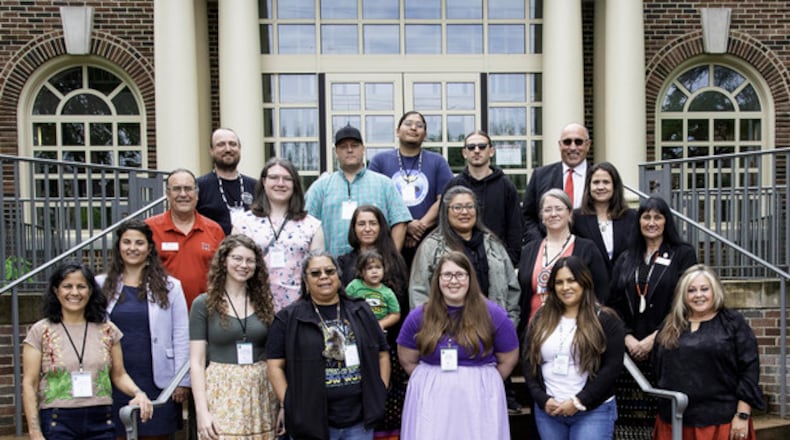The institute — based in the Myaamia Center on Miami’s Oxford campus — supports the Miami Tribe and other indigenous communities interested in using archival documentation to revitalize their languages by providing training and technology to archive and analyze language materials.
The $2.1 million funding, which is the largest external grant the Myaamia Center has received, will support National Breath of Life’s mission of empowering indigenous communities across the United States to revive and sustain their languages through access to archival materials, specialized training, and one-of-a-kind technology, said school officials.
National Breath of Life is co-directed by Daryl Baldwin, executive director of the Myaamia Center, and Gabriela Pérez Báez, associate professor of linguistics at the University of Oregon.
The Myaamia Center is a Miami Tribe of Oklahoma initiative that serves the needs of the Myaamia people through in-depth research to assist tribal educational initiatives aimed at the preservation of language and cultural archives said the Baldwin.
The relationship between the school and the Miami Tribe extends back almost two centuries.
“Archives play a critical role in a growing number of revitalization efforts today,” Baldwin said. “The amount of capacity building needed to fully utilize archival materials is both labor intensive and expensive, but necessary if we are to move our efforts forward.”
Baldwin – who in 2016 won a prestigious MacArthur Foundation Genius grant - added, “Support from Mellon Foundation will significantly increase the capacity of the National Breath of Life apprenticeship program and training needed for many of the tribal communities we work with. This growth is very timely.”
School officials said the National Breath of Life’s initiatives are designed to uphold the data sovereignty of indigenous communities, ensuring these communities retain complete control over their digital archives and language data. With the expanded program and resources, the program is committed to advancing collaborative, community-centered technology solutions.
The Myaamia Center will begin implementing these expanded programs this year and program officials said they “anticipate an immediate impact as more indigenous communities gain access to necessary language revitalization tools.”
About the Author
